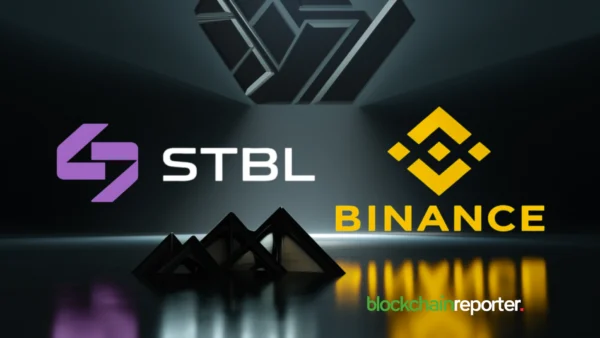
The blockchain is often heralded as a revolutionary technology, underpinning the success of cryptocurrencies like Bitcoin and Ethereum. However, the magic that enables these decentralized networks to operate reliably without a central authority lies in the consensus algorithms. These algorithms are critical in maintaining the integrity and security of blockchain transactions. Here, we delve into what consensus algorithms are, how they work, and why they are indispensable in the blockchain ecosystem.
The Role of Consensus in Blockchain Technology
At its core, a consensus algorithm is a protocol that allows all the nodes (computers) in a blockchain network to agree on the current state of the digital ledger. This agreement must be reached in a trustless environment, where nodes do not necessarily know or trust each other. The primary challenge is ensuring that every participant has a synchronized ledger reflecting all transactions, which are acknowledged and agreed upon by the majority.
Key Types of Consensus Algorithms
- Proof of Work (PoW):
- How It Works: PoW involves solving complex mathematical puzzles. The process, known as mining, requires significant computational power. The first miner to solve the puzzle gets the right to add a new block of transactions to the blockchain.
- Usage: Popularized by Bitcoin, PoW is known for its security but criticized for its environmental impact due to the high energy consumption of mining activities.
- Proof of Stake (PoS):
- How It Works: In PoS, the creator of the next block is chosen via various combinations of random selection and wealth or age (i.e., the stake). It does not require substantial computational work like PoW, making it more energy-efficient.
- Usage: Ethereum is in the process of transitioning to PoS with its Ethereum 2.0 upgrade, highlighting the shift towards more energy-efficient consensus mechanisms in the industry.
- Delegated Proof of Stake (DPoS):
- How It Works: DPoS is an evolution of the basic PoS, where stakeholders elect representatives, or “delegates,” to validate transactions and create blocks on their behalf.
- Usage: Platforms like EOS and Tron use DPoS to achieve faster transaction speeds and increased scalability.
- Practical Byzantine Fault Tolerance (PBFT):
- How It Works: Originally designed to withstand malicious attacks from within, PBFT achieves consensus by getting over two-thirds of nodes to agree on a transaction’s validity.
- Usage: Often used in permissioned blockchain networks where speed and fault tolerance are crucial.
The Importance of Consensus in Blockchain Security
The choice of a consensus algorithm can affect the security, speed, scalability, and decentralization of a blockchain. For instance, while PoW provides excellent security, it does not scale well due to its high resource and energy demands. On the other hand, PoS offers a balance between decent security and better energy efficiency, allowing for greater scalability.
The Future of Consensus Algorithms
As blockchain technology continues to evolve, so too do the consensus algorithms that underpin them. Innovations such as sharding in PoS systems aim to enhance scalability further, while new algorithms like Proof of History (PoH) and Proof of Space and Time (PoST) are being developed to address specific blockchain needs and limitations.
Conclusion
Consensus algorithms are not just the foundation of blockchain technology’s functionality and security—they are also central to its ongoing evolution. As the blockchain landscape continues to expand and diversify, understanding and improving these algorithms will remain a critical area of focus for developers and industry stakeholders alike.
Frequently Asked Questions
What is a consensus algorithm in blockchain?
A consensus algorithm is a protocol that ensures all nodes in a blockchain network agree on the state of the digital ledger. It guarantees that every transaction is verified and recorded in a trustless environment, where participants do not necessarily know or trust each other. Consensus mechanisms are vital for maintaining the integrity, security, and synchronization of the blockchain network.
Why are consensus algorithms important for blockchain security?
Consensus algorithms ensure that blockchain networks are secure by preventing malicious actions and ensuring that all participants have an accurate, synchronized version of the ledger. The choice of algorithm impacts the blockchain’s security, speed, scalability, and decentralization. While Proof of Work offers high security, it struggles with scalability due to resource-intensive mining. Proof of Stake provides a balance, offering security, energy efficiency, and scalability.
What are the different types of consensus algorithms?
There are several types of consensus algorithms used in blockchain technology. Proof of Work (PoW) involves solving complex mathematical problems to add new blocks, as seen in Bitcoin. It is known for its security but criticized for its energy consumption. Proof of Stake (PoS) selects the next block creator based on factors like stake, offering more energy efficiency and scalability, and Ethereum is transitioning to PoS. Delegated Proof of Stake (DPoS) elects delegates to validate transactions and create blocks, used by platforms like EOS and Tron for faster transaction speeds. Practical Byzantine Fault Tolerance (PBFT) relies on nodes agreeing by majority consensus to validate transactions and is often used in permissioned blockchains for high speed and fault tolerance.









